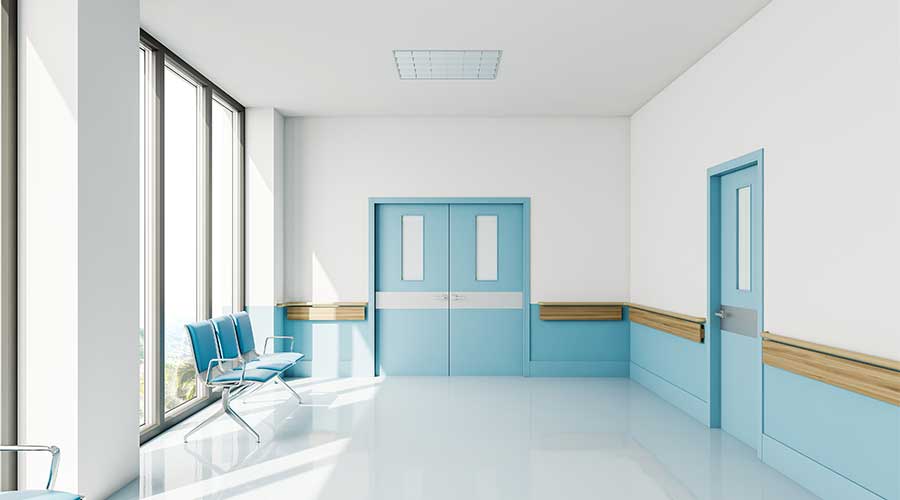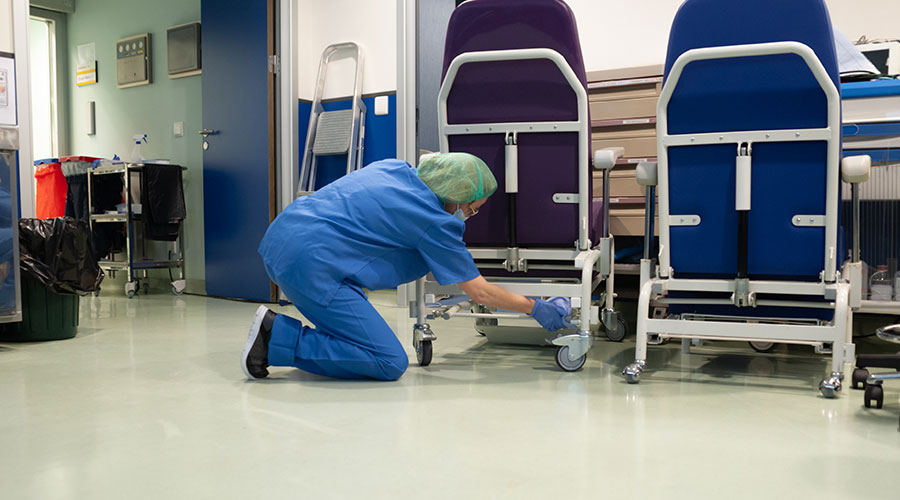The timespan for trendy items is only getting shorter. Designers are always looking out for the next big trend, forcing manufacturers to stay innovative with new creations. For doors and hardware manufacturers, trends usually focus on safety or cleaning measures rather than stylistic aesthetics. For this edition of the manufacturer roundtable, Healthcare Facilities Today talked with manufacturers on trends they expect to see in the coming years.
What door and hardware trends do you expect to see in the coming years?
“With COVID, Ebola and other infectious disease impacting us in the past few years, we have seen an upward trend for automatic touchless activation, meaning doors that don’t require a user to physically touch something to activate them. Automatic doors can be fitted with a sensor that can acuate the doors, whether that be an overhead presence sensor or a touchless sensor.”
— Ashley Estrada, product manager, Horton Automatics
“Door hardware trends continue to center around streamlining and creating a minimalist interaction at each opening. Traditional access control hardware would use multiple devices that were located around the frame of the opening and included bulky hardware on the door. These designs usually needed complex wiring schematics and required low voltage power to operate.
Today’s locking systems are about integrating as much technology, features and functionality into the lockset as possible and installing one sleek, intelligent, battery-operated unit on a door, often incorporating mobile or proximity-based tech. We will see this trend continue in the coming years and single lockset intelligence will continue to evolve.”
— Paul Canon, industry leader – healthcare, SALTO Systems
“I anticipate that we will see smarter systems in markets with more of the applications in the healthcare facility working together. More facilities are looking at GPOs or owner standards to reduce cost and increase efficiency in retrofit and new construction of facilities. In tandem, facilities will likely implement security technology and pursue projects which may have been put off over the last few years and expanded security plans, including key control, credentialing, and ligature resistant products. According to our survey, in 2022, 55 percent of hospitals plan to standardize the purchase of door hardware and access control products.”
— Uriah Parker, project sales manager – Midwest at Allegion
Mackenna Moralez is the associate editor for Healthcare Facilities Today.

 Seeking Standards for Microbial Loads in Healthcare Facilities
Seeking Standards for Microbial Loads in Healthcare Facilities UCR Health Unveils Plans for Major Expansion
UCR Health Unveils Plans for Major Expansion High-Performance Windows Support Safety at UW Medicine's New Behavioral Health Center
High-Performance Windows Support Safety at UW Medicine's New Behavioral Health Center Central Maine Healthcare Dealing with IT System Outage
Central Maine Healthcare Dealing with IT System Outage Kaiser Permanente Opens Newly Expanded Everett Medical Center
Kaiser Permanente Opens Newly Expanded Everett Medical Center